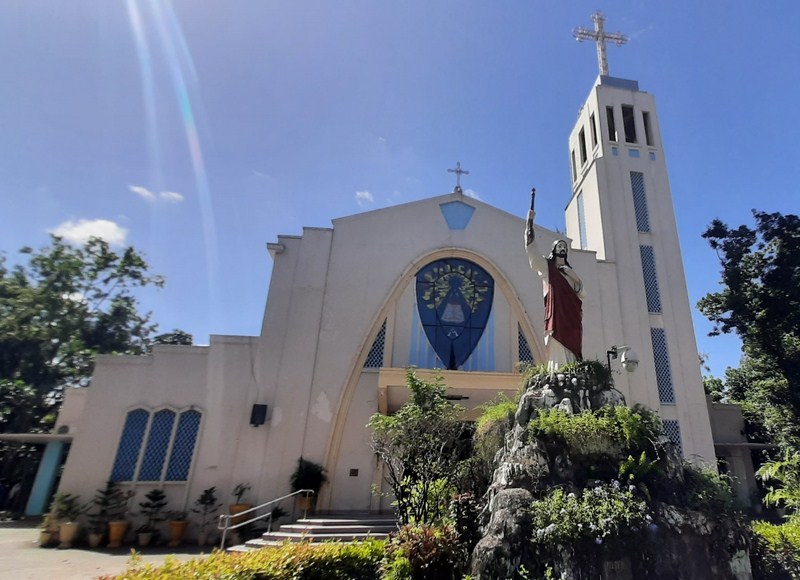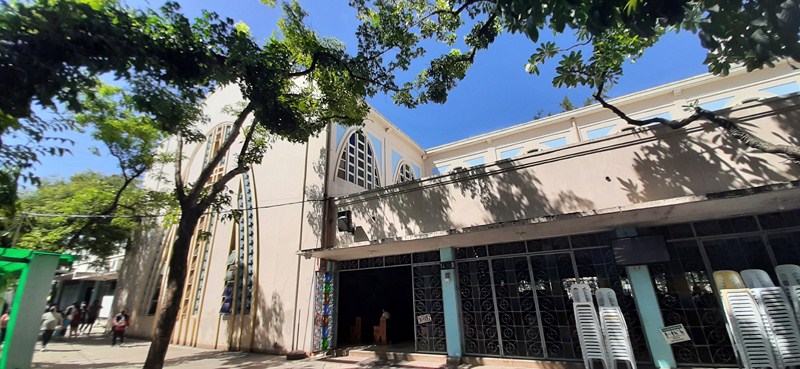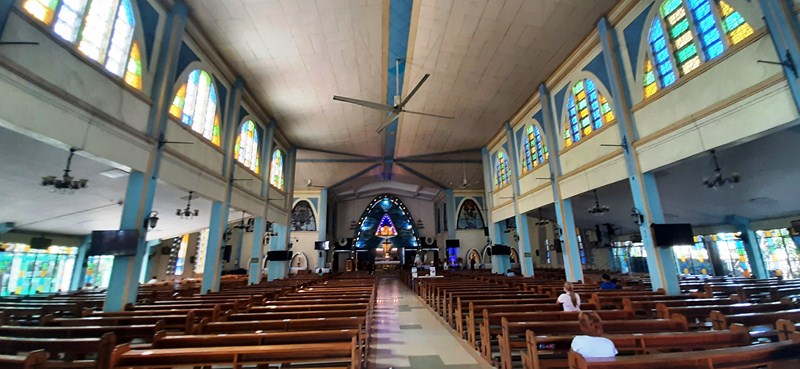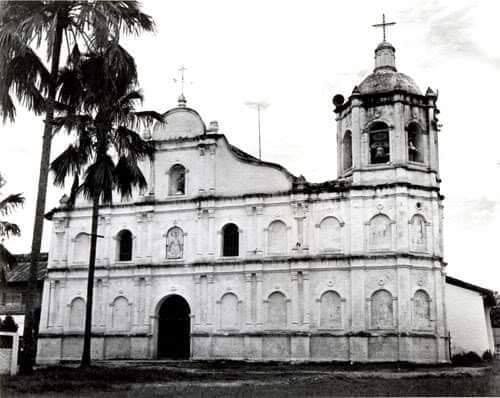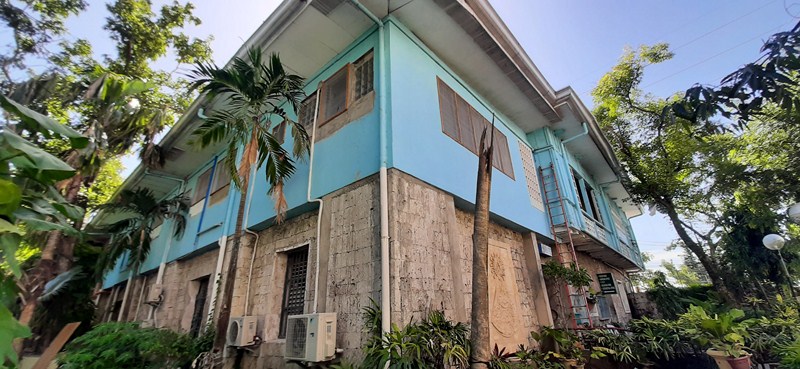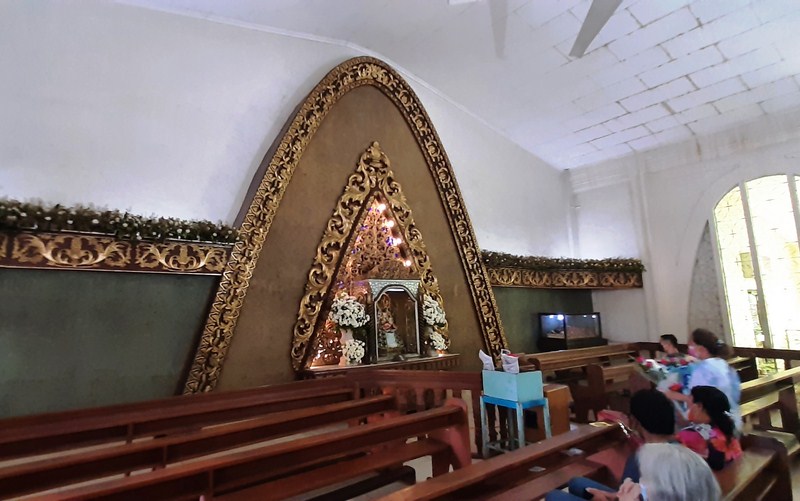Aside from the famed Santo Niño de Cebu, Cebuanos are also devoted to another image – the felicitous and miraculous image of Nuestra Señora De la Regla (Our Lady of the Rule). The image, carved from the trunk of dark Philippine hardwood, is patterned after the original located in Chipiona, Spain. The image is currently venerated at her own altar at the National Shrine of Nuestra Señora de la Regla.
St. Augustine, the bishop of Hippo, started the devotion to Our Lady of the Rule in Northern Africa. Using his own hands, he has carved an image of Our Lady which was one of the relics that has survived the destruction of the city of Hippo. Upon St. Augustine’s death, the monks took the image with them when they fled to Spain.
In Spain, the image survived the destruction and pillage of the Moors. Miracles were attributed to it and, because of this, the devotion to Our Lady rapidly spread. In 1330, the Virgin appeared to an Augustinian monk and instructed him to go to the city of Cadiz. Here, he was to look for a cave where the image had been hidden away. He dug it up and found a hidden underground altar.
The richly vested (given by the devotees as a sign of gratitude to the answered prayers through her intercession) Brown Madonna holds the Infant Jesus in front of her, as if presenting the child to the people and telling them to worship his Son, the God became Man. For several centuries, the Virgen de la Regla was venerated under several names: Virgen Libica, Virgen del Sagrario, Estrella de los Mares and La Virgen Morena, or Morenita.
In the 18th century, when the Augustinian Order was given control over the parish of Opon (now Lapu-Lapu City), the devotion was transported to the Philippines. In 1735, the people first saw a picture of the Virgen de la Regla when the first parish priest, Francisco Avalle, an Augustinian monk, showed it to them. Fr. Avalle, having lived for 10 years in the Monastery of Nuestra Señora de la Regla in Chipiona, Andalucia, Spain, was a devotee.
Upon hearing the story of the Virgin of Chipiona, the Oponganons chose Our Lady of the Rule as their patroness. A big picture, encased in a wooden frame, was made and placed on the altar. Miracles began to happen and the devotion flourished. Later a hardwood statue replaced the picture for veneration. Between 1735 and 1744, a Baroque-style church, made with Mactan coral stone and measuring 60 m. long, 23 m. wide and 14 m. high, was built.
During World War II, the church was slightly damaged but, in 1960, it was torn down during the term of Dutch Fr. Cornelio Van De Loo, of the Missionaries of the Sacred Heart, who was assigned as parish priest, bypassing 200 years of history, and replaced with a new concrete church. The priests also sold off the church’s coral blocks and, later, its altar to the University of San Carlos Museum. Thankfully, the spacious and solid convent, built in 1855 by Fr. Simon Aguirre, is still intact.
On Nov. 27, 1954, as a highlight to the Archdiocesan Marian Congress that year, Archbishop (later Cardinal) Julio Rosales crowned the Virgin, the first image from the Visayas to receive such a recognition.
National Shrine of Nuestra Señora de la Regla: B.M. Dimataga St., Poblacion, Lapu-Lapu City 6015. Tel: (032) 340-8081. Feast day: November 21.
Lapu-Lapu City Tourism Office: City Hall Compound, Lapu-Lapu City Hall Access Rd.,-Lapu City 6015. Tel: (032) 341-1644. E-mail: lapulaputourismoffice@gmail.com.
Cebu Provincial Tourism Office: 3/F, East Wing, Capitol Executive Bldg., Capitol Site, Cebu City 6000. Tel: (032) 888-2328. E-mail: sugbuturismo@gmail.com.
Department of Tourism Regional Office VII: G/F, LDM Bldg., Cor. Legaspi and M.J. Cuenco Sts., 6000 Cebu City. Tel: (032) 412-1966, (032) 412-1967, (032) 254-3534, (032) 254-6650 and (032) 254-2811. Fax: (033) 335-0245. Email: phdot7@tourism.gov.ph. Airport Office Tel: (032) 494-7000 loc. 7548.
Cebu Pacific Air has daily flights from Manila to Cebu’s Mactan International Airport. It also has flights from Clark (Pampanga) and Davao City. Book via www.cebupacificair.com.

